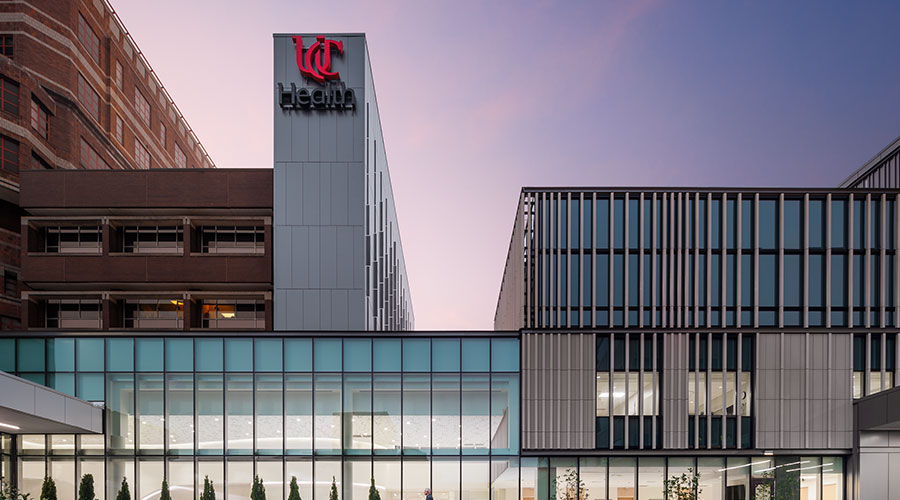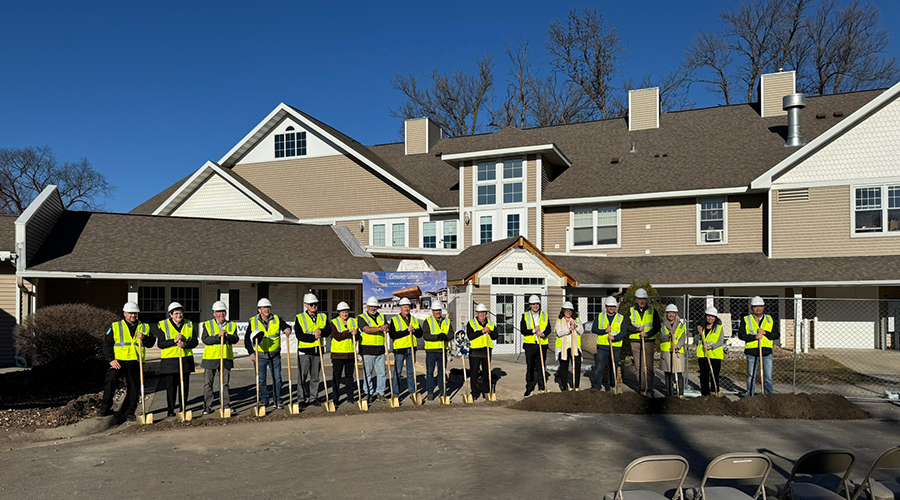Healthcare facility construction and renovation continues to grow. According to the American Institute of Architects, healthcare construction is expected to see a seven percent gain this year, and an additional four percent gain next year.
This construction activity comes as the healthcare sector works to accommodate growing patient populations, expand capabilities and meet increasing demand for specialized medical services.
Designers and architects of these healthcare construction projects today are increasingly selecting insulated metal panels (IMPs) for their benefits in these key areas.
Energy performance
Energy performance is key for energy intensive healthcare facilities. Healthcare buildings represent four percent of total commercial floorspace but account for approximately nine percent of energy consumption in commercial buildings, according to the most recent data from the U.S. Energy Information Administration.
An R-value is a measurement of how much resistance insulation has to heat flow – the higher the R-value, the higher level of insulation. IMPs offer R-values of up to R-8.0 per inch (for comparison, fiberglass blown-in insulation has R-values of roughly R-2.2 to R-2.7 per inch). An air and watertight continuous insulation barrier seals the building enclosure and helps inhibit energy loss. The built-in insulation in the metal panels creates an excellent barrier against heat transfer, helping large-scale buildings like hospitals reduce energy usage and costs and meet increasingly stringent energy codes.
This thermal performance also allows temperatures to be maintained at a more constant level across entire spaces, which helps facilitate improved occupant comfort.
These panels also feature tight-fitting interlocking joints that provide a high-quality air and vapor barrier, helping to resist moisture and prevent mold, dust, and pathogens.
Embodied and operational carbon
The built environment is widely known for being a major contributor of greenhouse gas emissions. According to Architecture 2030, the built environment generates 42 percent of annual global CO2 emissions. The healthcare sector's overall emissions account for an estimated 8.5 percent of U.S. emissions.
As climate change concerns grow, it is becoming a consideration in the design of healthcare buildings. Today, architects and designers are placing greater emphasis on minimizing the environmental impact of new healthcare building projects and renovations of existing healthcare facilities.
To help reduce the carbon footprint of healthcare facilities, architects and contractors are embracing building practices that include the use of building materials like IMPs.
The energy-efficient properties of IMPs can help decrease carbon emissions and provide healthcare facilities with a pathway toward net zero energy for high-performance buildings. The high R-values and strong thermal performance offered by IMPs helps healthcare facilities reduce energy consumption and reduce carbon emissions.
In a study from one IMP manufacturer, it was demonstrated that its IMPs can reduce embodied carbon in the walls by 28 percent compared to conventional concrete wall assemblies.
Design flexibility
When it comes to design, IMPs can help healthcare facilities communicate brand image and identity.
Today, these panels come in a wide range of profiles, patterns, color options and finishes that can be customized to fit any project’s design aesthetic. They can also be installed vertically or horizontally for more design options. This offers flexibility for design professionals, allowing them to create a distinctive look that reflects a brand’s image and results in impactful designs that integrate with a location and aesthetic.
Ease of installation
Construction projects in the healthcare sector often have tight timelines, and the speed of building advantage of IMPs is another reason why they are selected as the building envelope solution on a wide range of projects in this sector.
As a single component system, these lightweight, modular panels require only one type of installer, rather than multiple trades, which accelerates speed of build, reduces on-site disruption, and creates construction efficiencies that result in labor and cost savings.
IMPs in action in the healthcare sector
With the wide range of benefits provided by IMPs, it’s no surprise that this building envelope solution was selected by architects designing the expansion of the 30-year-old emergency department at University of Cincinnati (UC) Medical Center. As the region’s only Level I trauma center for adults, the UC Medical Center needed to expand its capacity to provide emergency care to the growing region.
With the region’s increasing demand for emergency care, speed of build in this renovation was important. Quick installation of Kingspan Insulated Panels North America's IMPs provided a weathertight envelope in reduced time, drying in the emergency room faster and allowing for inside finish work to begin sooner. The fast-tracked construction to prevent scheduling delays for on-time completion.
IMPs also provide thermal efficiency and energy efficiency benefits to the new emergency department. By creating air and watertight continuous insulation seals, IMPs provide strong thermal barriers to maintain comfortable environments for patients. This insulation barrier also helps to reduce energy consumption.
The wide range of available IMP design options also allowed architects to select panels conveying a unique, modern aesthetic that integrates with the theme of UC Health’s current revitalization project.

 Healthcare Is the New Retail
Healthcare Is the New Retail Bridgeway Behavioral Health Services Launches Campaign to Renovate Health Center
Bridgeway Behavioral Health Services Launches Campaign to Renovate Health Center Ground Broken for New North Dakota State Hospital
Ground Broken for New North Dakota State Hospital AI Usage for Healthcare Facilities
AI Usage for Healthcare Facilities Ground Broken on Pelican Valley Senior Living Modernization Project
Ground Broken on Pelican Valley Senior Living Modernization Project